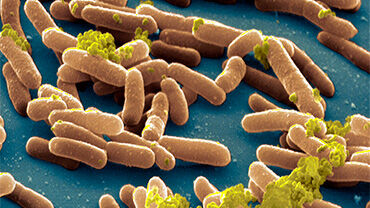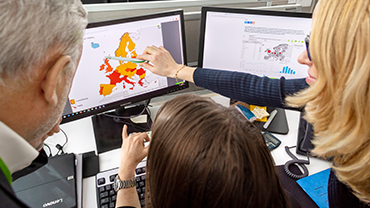92 Salmonella Senftenberg cases reported in 11 EU/EEA countries
Since August 2022, cases of Salmonella Senftenberg have been identified in 13 countries worldwide. Case interviews suggest cherry-like tomatoes as a possible vehicle of infection. However, in the absence of microbiological evidence, the source of infection and points of contamination could not be established.
Since August 2022 and as of 12 July 2023, 92 cases of Salmonella Senftenberg, the majority with genetically similar isolates, have been reported in Austria (5), Belgium (4), Czechia (4), Estonia (1), Finland (12), France (16), Germany (26), Ireland (1), the Netherlands (5), Norway (1), Sweden (11), the United Kingdom (4), and the United States (2). One patient has died of the infection.
Case interviews in Austria, Germany, France, and Sweden suggested cherry-like tomatoes as a possible vehicle of infection. The first case was reported in France with an isolation date on 22 August 2022 and the most recent case was reported on 24 June 2023 in Sweden. Most cases were reported between October 2022 and March 2023, with a decline in the number of countries with exposure after December 2022. Currently, the risk for new infections is low.
The outbreak strain, which possessed gene-encoding resistance to quinolones, was detected in a mixed salad dish containing cherry tomatoes among green leaf vegetables prepared on 17 August 2022 in France. Tomatoes in the salad in France and tomatoes suspected as vehicles of the infections in Austria were traced back to wholesalers in Germany, the Netherlands, and Spain, and to tomato growers in the Netherlands, Spain, and Morocco. In the absence of microbiological evidence of the tomatoes, the role of the traced food companies and growers, as sources of the infections and/or the points of contamination could not be established. The genome of the representative German isolate is available in EnteroBase: 23-00207 (SAL_QB9631AA).
Various animals can be reservoirs for Salmonella, and humans generally become infected by eating poorly cooked or raw contaminated food. The incubation period and the symptoms depend on the amount of bacteria ingested, the immune status of the person, and the type of Salmonella.
The symptoms generally appear in 12 to 36 hours after the consumption of contaminated food. These include fever, diarrhoea, abdominal pain, nausea, and vomiting. and the symptoms usually last for a few days. Antibiotic treatment is commonly not needed but due to the effect of dehydration, hospital admission may be required. In rare cases, an infection can be fatal, particularly in the elderly and people with suppressed immunity.
ECDC encourages public health authorities to continue the collaboration with the food safety authorities in countries where cases have been notified.
|
Country |
Total |
Confirmed cases |
Possible cases |
|---|---|---|---|
|
Austria |
5 |
5 |
0 |
|
Belgium |
4 |
4 |
0 |
|
Czechia |
4 |
0 |
4 |
|
Estonia |
1 |
0 |
1 |
|
Finland |
12 |
11 |
1 |
|
France |
16 |
16 |
0 |
|
Germany |
26 |
21 |
5 |
|
Ireland |
1 |
1 |
0 |
|
Netherlands |
5 |
5 |
0 |
|
Norway |
1 |
1 |
0 |
|
Sweden |
11 |
11 |
0 |
|
Total EU/EEA |
86 |
75 |
11 |
|
United Kingdom |
4 |
4 |
0 |
|
United States |
2 |
2 |
0 |
|
Total |
92 |
81 |
11 |







